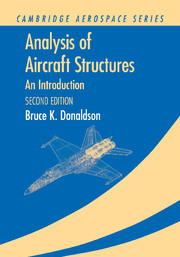Book contents
- Frontmatter
- Contents
- Introduction to the Second Edition
- Introduction to the First Edition
- List of Repeated Engineering Symbols
- Acknowledgments
- Part I The Fundamentals of Structural Analysis
- Part II **Introduction to the Theory of Elasticity**
- Part III Engineering Theory for Straight, Long Beams
- Part IV Work and Energy Principles
- Part V Energy-Based Numerical Solutions
- Part VI Thin Plate Theory and Structural Stability
- Appendix A Additional Topics
- Appendix B Selected Answers to Exercises
- References
- Index
Part VI - Thin Plate Theory and Structural Stability
Published online by Cambridge University Press: 05 June 2012
- Frontmatter
- Contents
- Introduction to the Second Edition
- Introduction to the First Edition
- List of Repeated Engineering Symbols
- Acknowledgments
- Part I The Fundamentals of Structural Analysis
- Part II **Introduction to the Theory of Elasticity**
- Part III Engineering Theory for Straight, Long Beams
- Part IV Work and Energy Principles
- Part V Energy-Based Numerical Solutions
- Part VI Thin Plate Theory and Structural Stability
- Appendix A Additional Topics
- Appendix B Selected Answers to Exercises
- References
- Index
Summary
Introduction
While the finite element method, with occasional assistance from the unit load method or some such application of the principle of complementary virtual work, is a completely satisfactory approach to all linear structural analysis tasks, there are still many topics that need to be touched upon in this introductory textbook in order to provide a reasonably complete overview of aerospace structural analysis. The first of these topics is the mechanics of two-dimensional structural elements other than merely the equations for the out-of-plane stretching of thin membranes and the finite elements that can be used to determine the in-plane deflections and stresses of thin skins. Chapter 22 considers the strength of materials approach to thin plate bending and buckling. Again, the objective is to provide a sufficient understanding of the mechanics and the mathematics of thin plate bending so that a simple, but representative, thin plate finite element can be introduced. The next step in complexity after thin plates is thin shells. A treatment of thin shells of general geometry is complicated. Hence the analysis of thin shells is left entirely to textbooks that are specific to that topic.
Chapter 23 returns to the essential topic of elastic stability by discussing a simple finite element for beam buckling. Just as any finite element analysis is much superior to a differential equation–based analysis in its ability to address geometric and material complexities, a beam buckling finite element greatly expands the range of beam and beam frame buckling problems that can be so analyzed.
- Type
- Chapter
- Information
- Analysis of Aircraft StructuresAn Introduction, pp. 757 - 758Publisher: Cambridge University PressPrint publication year: 2008



